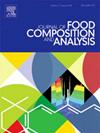摘要
本研究介绍了激光诱导击穿光谱(LIBS)与 k-nearest neighbors(KNN)建模相结合的新颖应用,以对泡菜的产地进行分类。利用波长为 279 纳米的 Mg II 和波长为 766 纳米的 K I 的光谱强度,我们的分类准确率达到了 92.8%。这种方法有效地利用了影响泡菜元素组成的食盐供应链的地区差异。其创新之处在于将类间距离法应用于 LIBS 分析的变量选择,提高了食品分类的可解释性和准确性。与传统的元素分析技术相比,LIBS 提供了一种实用、经济高效的解决方案,只需进行最少的样品制备即可进行快速的现场分析。这项研究不仅证明了 LIBS 在鉴别食品真伪方面的潜力,还为开发精确检测各种食品中镁和钾的方法提供了启示,有助于推进食品质量控制。This study introduces a novel application of Laser-Induced Breakdown Spectroscopy (LIBS) combined with k-nearest neighbors (KNN) modeling to classify the origin of kimchi. Using the spectral intensities of Mg II at 279 nm and K I at 766 nm, we achieved a classification accuracy of 92.8 %. This method effectively leverages regional differences in salt supply chains impacting kimchi's elemental composition. The innovation lies in applying the interclass distance method for variable selection in LIBS analysis, enhancing the interpretability and accuracy of food classification. Compared to traditional elemental analysis techniques, LIBS offers a practical, cost-effective solution for rapid field analysis with minimal sample preparation. This study not only demonstrates the potential of LIBS for food authenticity but also provides insights for developing accurate methods for detecting Mg and K in various food products, contributing to advancements in food quality control.

 求助内容:
求助内容: 应助结果提醒方式:
应助结果提醒方式:


